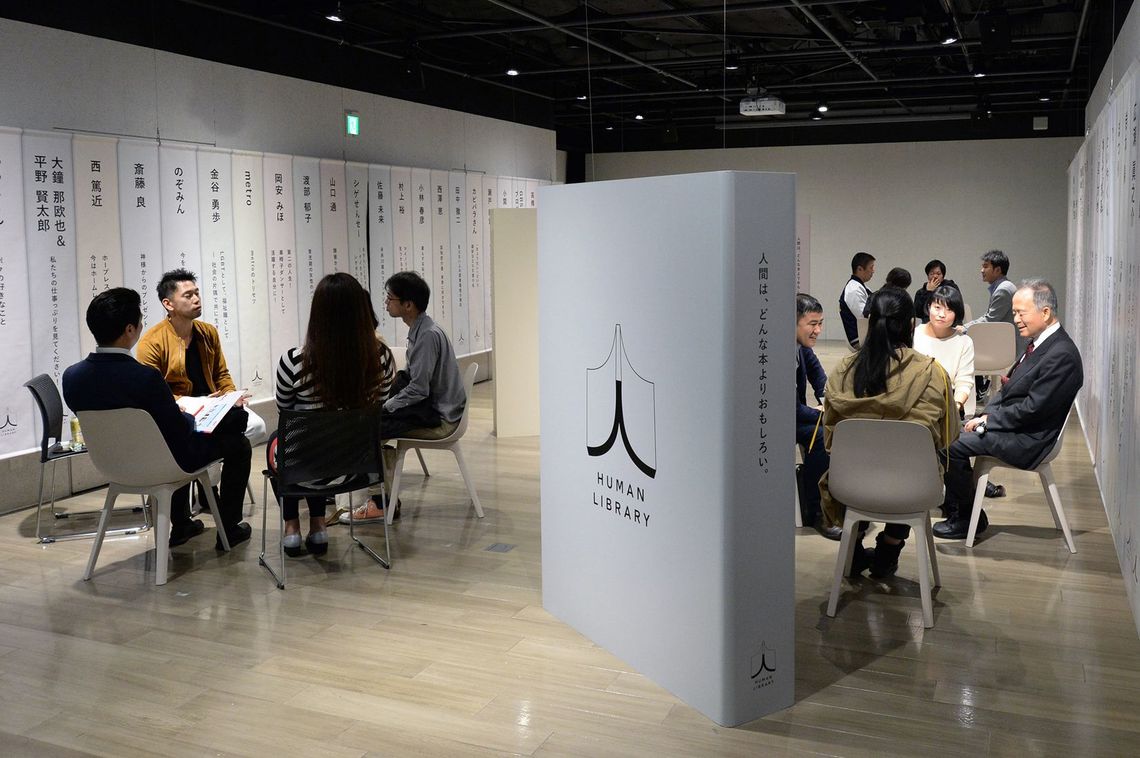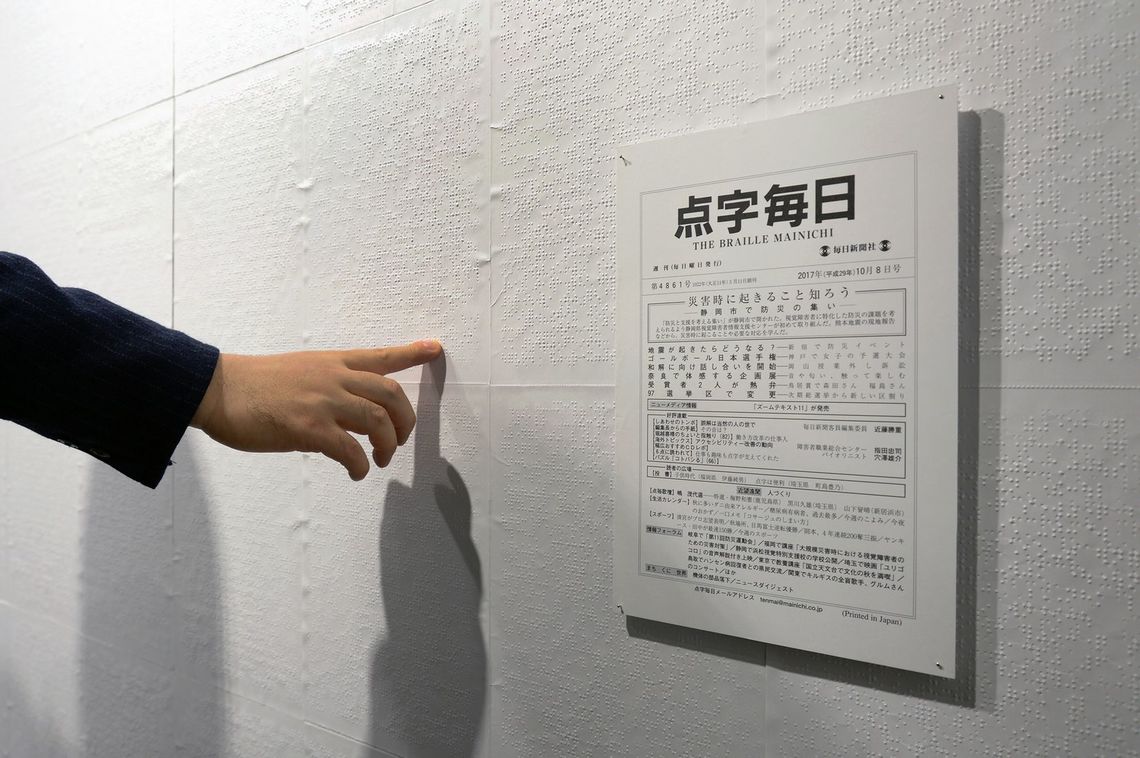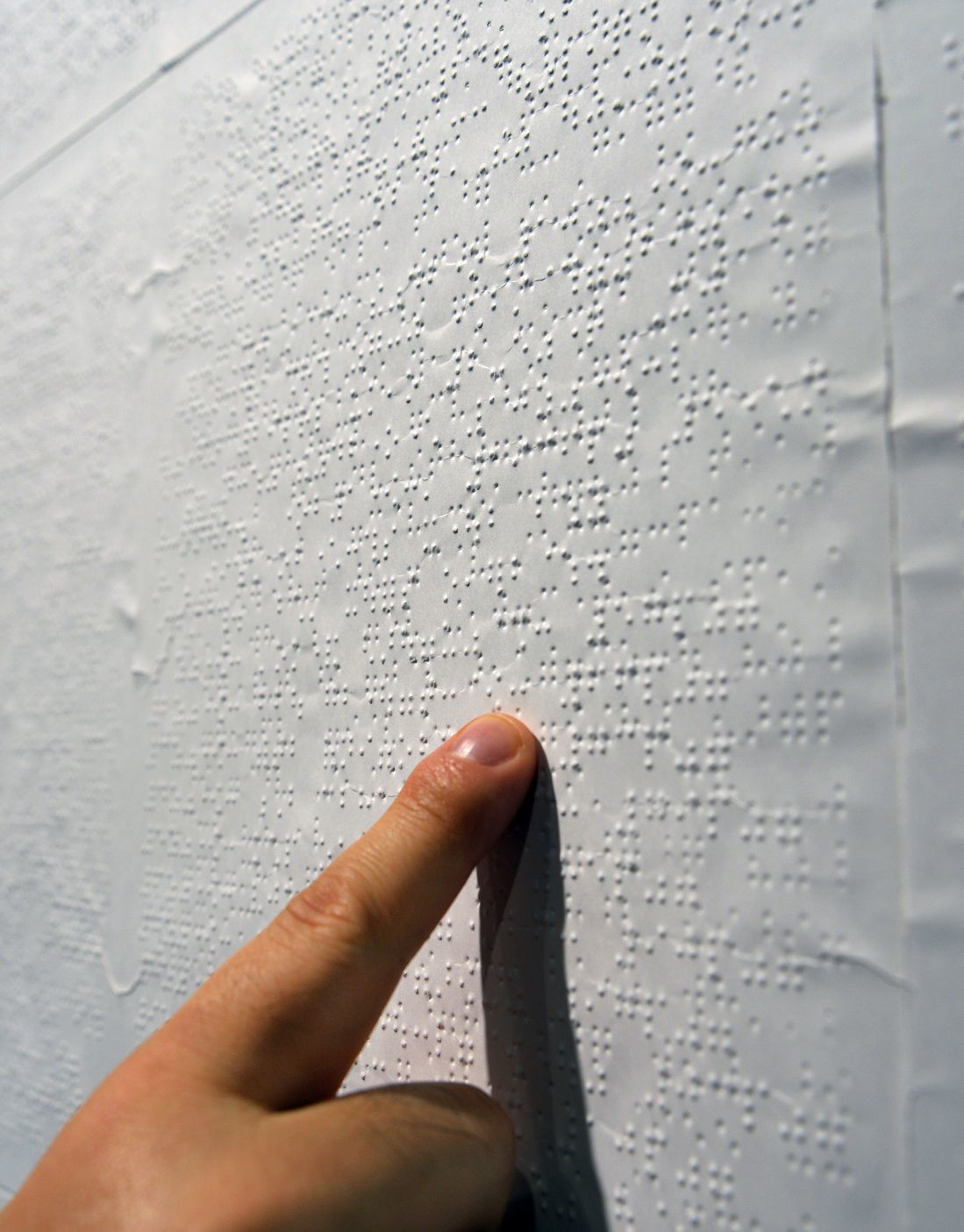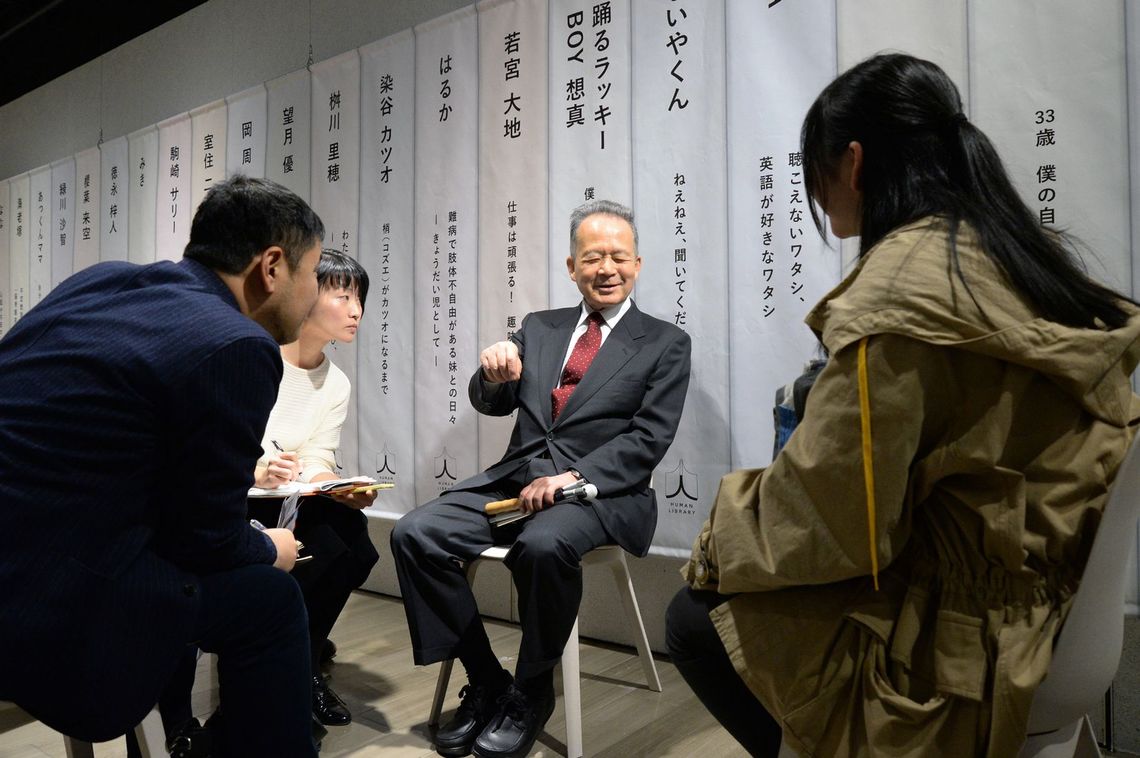Note: This website was automatically translated, so some terms or nuances may not be completely accurate.
At the "Super Welfare Exhibition," sponsor Mainichi Shimbun displayed "Human Library" and "Braille Mainichi."

The Mainichi Newspapers Co. participated in the " Super Welfare Exhibition " from November 7 to 13, holding a dialogue event called "HUMAN LIBRARY" and an exhibition about its braille newspaper "Mainichi Braille" at Shibuya Cast in Tokyo.
The Super Welfare Exhibition, officially titled "2020, Shibuya: Experience the Everyday of Super Welfare," is an annual exhibition held primarily at Shibuya Hikarie. Organized by the People Design Institute since 2014, it introduces various ideas and technologies to remove "mental barriers" toward minorities, including people with disabilities, and welfare itself. This year, satellite venues were set up throughout Shibuya Ward in addition to Hikarie, hosting various events over the course of a week.
The Mainichi Newspapers, which has been working toward realizing a barrier-free society—including publishing Japan's only braille newspaper, "Braille Mainichi," for 95 years—is running its "Together 2020" campaign aiming for a co-prosperous society where people live by helping each other. This exhibition was part of that campaign and also commemorated the 95th anniversary of the Braille Mainichi project.
At one of the Super Welfare Exhibition satellite venues, the entire wall of the multipurpose space on the first floor of Shibuya Cast featured an installation displaying articles from Braille Mainichi.


A participatory event held at this venue was the "Human Library." Originating at a music festival in Denmark in 2000, this initiative aims for mutual understanding through small-group dialogues between "books" (people with disabilities or minorities) and "readers" (participants).

This week-long event featured over 90 "books" participating, enjoying deep conversations with visitors who became "readers." The Mainichi Shimbun, with its close ties to the visually impaired through Braille Mainichi, selected seven visually impaired individuals as "books."
Ms. Asuka Sasamoto of the Mainichi Shimbun, who has been involved since the planning stage, explained the event's significance: "The most important thing in making a newspaper is 'dialogue'. We held this event themed around that dialogue. Precisely because face-to-face dialogue in society is decreasing now, we felt this initiative was necessary."
She also noted that most of the "book" roles this time were filled by ordinary people, not celebrities. "Some participants have disabilities or serious illnesses, while others shared their experiences caring for family members with dementia. Opportunities for ordinary people to hear the voices of other ordinary people are rare. We want to capture the voices emerging from events like this and incorporate them into our newspaper coverage."

Mr. Tetsuji Tanaka, who actually served as a "book" and discussed reading conditions for the visually impaired with three "readers," shared his thoughts on the HUMAN LIBRARY: "In lectures, I speak to an unspecified large audience, and during Q&A, sometimes no questions come up, so I don't know if my message is getting through (laughs). Discussing in small groups with people I don't know at all like this allows for real interaction. I can answer questions accurately, and I think it's a very interesting approach."
Was this article helpful?